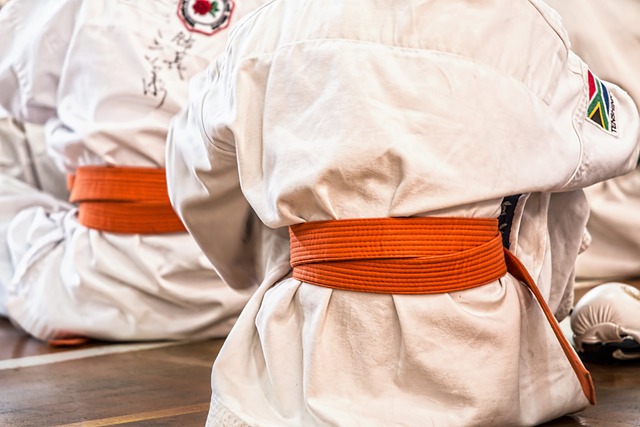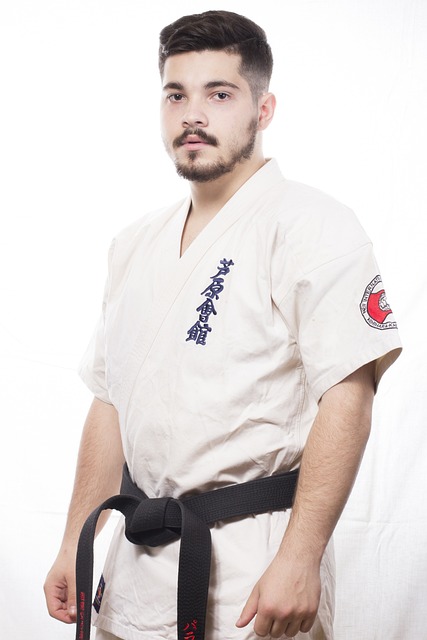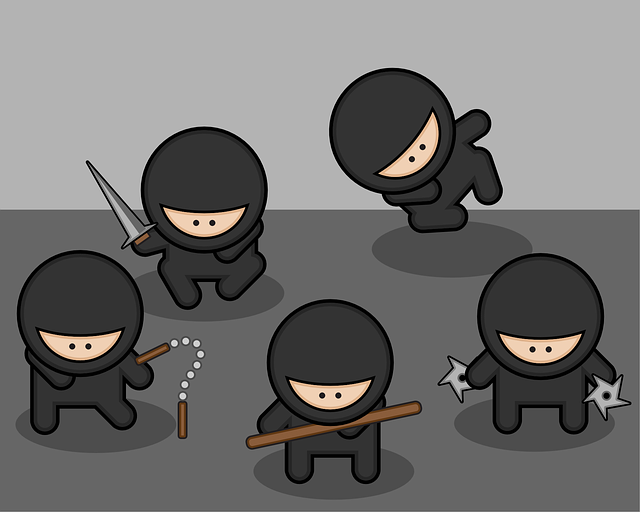To effectively practice karate at home, you need a spacious 6×6 meter area with a non-slip surface for safety. Investing in authentic 'keikogi' (karate uniforms) is crucial for proper form and tradition adherence. Essential equipment includes a heavy bag or mitts, focus mitts for partner work, a makiwara or punching bag to sharpen striking, and a wall mirror and camera for self-analysis. Kata practice at home enhances skill and understanding of karate's principles, requiring clear space, accurate instructional resources, and consistent review of recorded sessions to refine form and technique.
For advanced training, focus on precision strikes with equipment like heavy bags or mitts, and progress to controlled sparring in a designated area using protective gear. Integrate strength conditioning into your routine with exercises like push-ups, pull-ups, squats, lunges, and plyometrics to build muscle, endurance, and agility. Utilize 'keikogi' for their resistance benefits during training. Additionally, include balance and stability workouts using tools like balance boards to strengthen your stances. By adhering to this comprehensive approach, you can significantly improve your karate skills from the comfort of your home.
Embark on a martial arts journey from the comfort of your own home with our comprehensive guide to training Karate. Whether you’re a beginner or an experienced practitioner, this article provides valuable insights into setting up your personal dojo, mastering essential kata, and advancing your technique. Learn about the necessary equipment for a safe and effective practice space, follow our step-by-step approach to perfecting kata routines, and explore advanced drills for strikes, sparring, and strength conditioning. Don your karate uniform and immerse yourself in the discipline of Karate, all within the four walls of your home.
- Setting Up Your Home Karate Training Space: Essential Equipment and Layout
- Mastering Karate Kata at Home: Step-by-Step Guide to Practice Routines
- Advanced Techniques for Home Karate Practice: Strikes, Sparring, and Strength Conditioning
Setting Up Your Home Karate Training Space: Essential Equipment and Layout

When training karate at home, designing an effective and safe space is paramount. Begin by designating a clear area in your home that allows for ample movement, ideally measuring at least 6×6 meters if space permits. This ensures you can practice kata and basic movements without obstruction. Select a smooth, non-slip surface such as a mat or flooring to minimize the risk of injury from slips or falls. A variety of mats are available, including tatami mats, yoga mats, or interlocking fitness mats, each offering cushioning and shock absorption for strikes and falls.
Investing in the right equipment is crucial for a comprehensive home training experience. Start with a quality karate uniform, which will not only help you maintain proper form but also provide the necessary attire for authentic practice. A basic set of gear includes a heavy bag or mitts for striking, a focus mitt for a partner to assist with techniques, and a makiwara or punching bag for developing precision and power. Additionally, ensure you have a wall mirror to monitor your stances and posture, as well as a digital camera or video recording device to analyze and improve your performance. With these elements in place, you can create a dedicated karate training area that supports both the physical and mental aspects of the discipline.
Mastering Karate Kata at Home: Step-by-Step Guide to Practice Routines

Karate kata are sequences of movements that embody the principles, techniques, and philosophy of Karate. Practicing kata at home can be a rewarding way to refine your skills and deepen your understanding of this martial art. To begin mastering kata in your own space, start by setting up a clear area where you can move freely without obstruction. Ensure that the environment is safe, with sufficient room for practice and minimal distractions. Wearing appropriate karate uniforms called ‘keikogi’ will help you maintain proper posture and allow for a full range of motion.
Before commencing, familiarize yourself with the specific kata you wish to practice. There are various kata in Karate, each with its own flow and emphasis on different techniques. Utilize instructional videos or manuals that demonstrate the kata’s movements accurately. Record your practice sessions to analyze and correct any discrepancies in form or technique. Focus on executing each movement with precision and intent, remembering that consistency is key. Over time, as you become more comfortable with the sequences, gradually increase the complexity of your practice by incorporating deeper stances, more nuanced blocks, and precise strikes. Regularly revisit foundational movements to ensure continuous improvement and proficiency in your kata performance.
Advanced Techniques for Home Karate Practice: Strikes, Sparring, and Strength Conditioning

To elevate your home karate practice to advanced levels, focusing on strikes, sparring, and strength conditioning is paramount. Strikes are a core aspect of karate, and mastering them at home requires precision and dedication. Advanced practitioners can enhance their technique by using focus mitts or a heavy bag for targeted practice, simulating various combat scenarios. This not only sharpens your strikes but also hones your timing and reflexes. Sparring, the heart of martial arts, can be safely practiced at home by starting with slow, controlled movements and gradually increasing intensity. Set up a sparring area with clear boundaries and use protective gear such as a gum shield and, for more advanced training, body protectors to minimize injury risk. Incorporate drills that mimic real combat situations, focusing on defense, counterattacks, and strategic movement.
Strength conditioning is another critical component for advanced home karate practice. A well-designed workout routine should address both muscular strength and endurance. Include exercises like push-ups, pull-ups, squats, and lunges to build core strength, essential for executing powerful kicks and strikes. Integrate plyometric exercises to improve explosive power and agility. Karate uniforms called ‘keikogi’ are ideal for home training as they allow for a full range of motion while providing the necessary resistance to enhance your technique. Additionally, incorporate balance and stability exercises using tools like balance boards or wobble cushions to reinforce your karate stances. By combining these advanced techniques with consistent practice, you can significantly improve your karate skills from the comfort of your home.
In conclusion, training karate at home can be a fulfilling and effective way to improve your skills, provided you have the right setup and resources. By creating a dedicated space with essential equipment and a thoughtful layout, you can simulate a dojo environment to a significant degree. Mastering the intricate kata sequences is a cornerstone of karate practice, and following the step-by-step guide outlined in this article will help you execute these routines accurately. For those ready to advance their training, incorporating striking drills, sparring sessions, and strength conditioning into your regimen will further enhance your technique and physical readiness. Remember to don your karate uniforms correctly for optimal performance and comfort during practice. With dedication and the right approach, your home can become an excellent venue for honing your karate skills and achieving your martial arts goals.
